Posted on October 24th, 2013 by Mary Lord
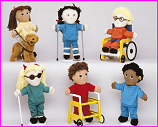 Students in grades 6 to 8 gain an understanding of physical limitations and the biomedical engineering design process by performing a variety of tasks without using their thumbs, eyes, or legs, then working in teams to create or improve and adaptive device.
Students in grades 6 to 8 gain an understanding of physical limitations and the biomedical engineering design process by performing a variety of tasks without using their thumbs, eyes, or legs, then working in teams to create or improve and adaptive device.
Read More
Filed under: Class Activities, Grades 6-8, Grades 6-8, Grades 9-12, Grades 9-12, Lesson Plans | Comments Off on Seeing the World Through a Different Lens
Tags: adaptive technologies, assistive technologies, bioengineering, biomechanical engineering, Class Activities, Grades 6-8, Lesson Plan, Mechanical engineering, Prosthetics, students with disabilities
Posted on August 29th, 2013 by Mary Lord
 Computer science has the highest pay for new college graduates, twice the national average job growth of more than double the national average, and applications that stretch from rock music to medicine. Yet 9 in 10 schools don’t teach programming. Code.org hopes to change that with a host of free resources to get kids as young as four creating websites and apps.
Computer science has the highest pay for new college graduates, twice the national average job growth of more than double the national average, and applications that stretch from rock music to medicine. Yet 9 in 10 schools don’t teach programming. Code.org hopes to change that with a host of free resources to get kids as young as four creating websites and apps.
The answer is computer programming, and advocates from Microsoft founder Bill Gates to former president Bill Clinton are pushing to include it in the K-12 curriculum.
Far from being complicated algorithms only a geek could master, code writing can be learned by just about anyone — even four-year-olds. Code.org has compiled a host of websites, courses, and other free resources to help students hone programming skills from building websites to creating phone apps. There also are tips for using code writing and programming projects and activities in math or science classes to cover content standards.
Read More
Filed under: For Teachers, Grades 6-8, Grades 6-8, Grades 9-12, Grades 9-12, Grades K-5, Grades K-5, K-12 Outreach Programs, Lesson Plans, Special Features, Web Resources | Comments Off on Code Calling
Tags: code writing, code.org, Computer Programming, Computer Science, Curriculum, Internet Resources, Lesson Plan, Resources for Teachers, STEM education, Teacher Resources, Technology for Learning, Website
Posted on June 19th, 2013 by Mary Lord
 In this activity, teams of students in grades K-12 learn about the history and engineering behind Ferris wheels by constructing a working model using pasta, glue, and teabags.
In this activity, teams of students in grades K-12 learn about the history and engineering behind Ferris wheels by constructing a working model using pasta, glue, and teabags.
Read More
Filed under: Class Activities, Grades 6-8, Grades 6-8, Grades 9-12, Grades 9-12, Grades K-5, Grades K-5, Lesson Plans | Comments Off on Build a Big Wheel
Tags: Class Activities, Ferris wheel, Grades 6-8, Grades 9-12, Grades K-5, London eye, motions and forces, Physics
Posted on March 18th, 2013 by Mary Lord
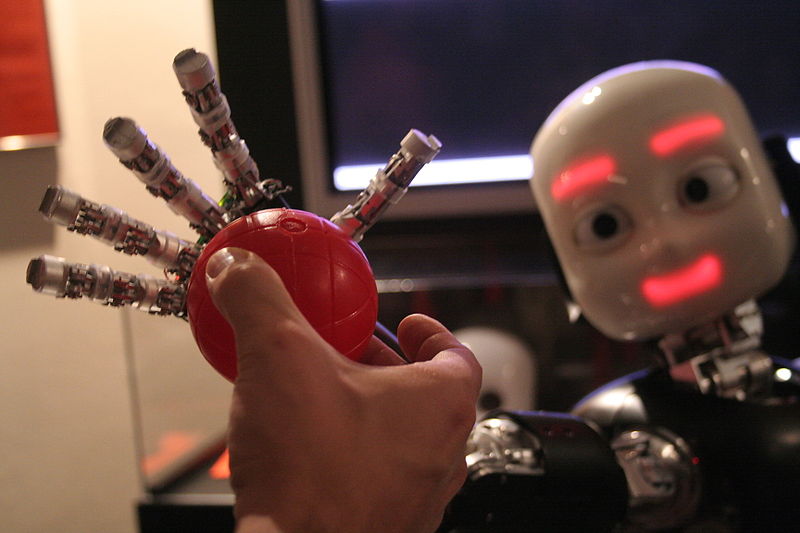 In this activity, students in grades 5 to 12 learn about accuracy, precision, and simple machines by working in teams to design and build a robotic basketball “player” that can nail a free-throw shot three times in a row.
In this activity, students in grades 5 to 12 learn about accuracy, precision, and simple machines by working in teams to design and build a robotic basketball “player” that can nail a free-throw shot three times in a row.
Read More
Filed under: Class Activities, Grades 6-8, Grades 6-8, Grades 6-8, Grades 9-12, Grades 9-12, Grades 9-12, Lesson Plans | 2 Comments »
Tags: accuracy, basketball, biomechanical engineering, biomechanics, catapult, Class Activities, Engineering, lever, Mathematics, percentages, Physics, precision, projectile, Robotics, simple machines, Sports Engineering, statistics
Posted on September 17th, 2012 by Mary Lord
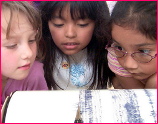 Students in grades 3 – 12 explore how the development of seismographs has helped save lives worldwide by working in teams to design their own seismograph from everyday items, test its ability to record a simulated classroom earthquake, evaluate their results, and report to the class.
Students in grades 3 – 12 explore how the development of seismographs has helped save lives worldwide by working in teams to design their own seismograph from everyday items, test its ability to record a simulated classroom earthquake, evaluate their results, and report to the class.
Read More
Filed under: Grades 6-8, Grades 9-12, Grades K-5, Lesson Plans | Comments Off on Lesson: Shake It Up with Seismographs
Tags: earthquake, Earthquake materials, Seismology
Posted on April 8th, 2012 by Mary Lord
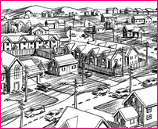 In this lesson, students in grades 8 to 10 experience civil and environmental engineering by planning a housing development while also protecting the native species that live there. They conduct research, draw plans, make brochures, and give presentations, with each four-member team having a project manager, civil engineer, environmental engineer, and graphic designer.
In this lesson, students in grades 8 to 10 experience civil and environmental engineering by planning a housing development while also protecting the native species that live there. They conduct research, draw plans, make brochures, and give presentations, with each four-member team having a project manager, civil engineer, environmental engineer, and graphic designer.
Read More
Filed under: Class Activities, Grades 6-8, Grades 6-8, Grades 9-12, Grades 9-12, Lesson Plans | 5 Comments »
Tags: biome, Civil Engineering, Class Activities, Earth Day, enviroment, Environmental Engineering, habitat, Lesson Plans, nature, STEM education
Posted on February 13th, 2012 by Mary Lord
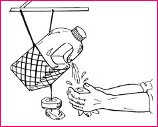 In this service-learning activity, teams of students in grades 10-12 learn the basic principles of fluid dynamics by designing and testing a prototype system to pipe water from a storage tank to a Tippy Tap hand-washing station similar to inexpensive homemade devices used extensively in the developing world.
In this service-learning activity, teams of students in grades 10-12 learn the basic principles of fluid dynamics by designing and testing a prototype system to pipe water from a storage tank to a Tippy Tap hand-washing station similar to inexpensive homemade devices used extensively in the developing world.
Read More
Filed under: Class Activities, Grades 9-12, Grades 9-12, Grades 9-12, Lesson Plans | Comments Off on Lesson: Tippy Tap Hand-Washer
Tags: Agricultural Engineering, Bernoulli, Class Activities, developing nation, energy conservation, Environmental Engineering, fluid dynamics, Grades 9-12, Lesson Plan, pipe systems, pipes, pressure, sanitation, service learning, velocity, Water
Posted on December 18th, 2011 by Mary Lord
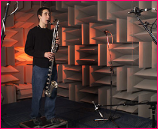 In this activity, students in grades 7-9 explore the sound-dampening capability of materials by designing and prototyping model sound booths. They learn about how sound is reflected and absorbed, and how it travels through various materials, providing an overview of sound dampening propagation in the context of engineering.
In this activity, students in grades 7-9 explore the sound-dampening capability of materials by designing and prototyping model sound booths. They learn about how sound is reflected and absorbed, and how it travels through various materials, providing an overview of sound dampening propagation in the context of engineering.
Read More
Filed under: Class Activities, Grades 6-8, Grades 6-8, Grades 9-12, Grades 9-12, Lesson Plans | 1 Comment »
Tags: acoustical engineering, Class Activities, Electrical Engineering, Grades 6-8, Grades 9-12, Lesson Plan, Music engineering, sound, teachengineering
Posted on December 4th, 2011 by Mary Lord
 In this activity, students in grades 4 – 12 will do math like a computer. They will learn the basics of binary number systems by writing and then counting on their hands, and use their knowledge to decode numbers and letters.
In this activity, students in grades 4 – 12 will do math like a computer. They will learn the basics of binary number systems by writing and then counting on their hands, and use their knowledge to decode numbers and letters.
Read More
Filed under: Class Activities, Grades 6-8, Grades 6-8, Grades 9-12, Grades 9-12, Grades K-5, Grades K-5, Lesson Plans | Comments Off on Lesson: Bits & Binary
Tags: binary number systems, Class Activities, code, Computer Engineering, Computer Programming, Computer Science, digital, Grades 6-8, Grades 9-12, Grades K-5, Lesson Plan
 Students in grades 6 to 8 gain an understanding of physical limitations and the biomedical engineering design process by performing a variety of tasks without using their thumbs, eyes, or legs, then working in teams to create or improve and adaptive device.
Students in grades 6 to 8 gain an understanding of physical limitations and the biomedical engineering design process by performing a variety of tasks without using their thumbs, eyes, or legs, then working in teams to create or improve and adaptive device.








 Computer science has the highest pay for new college graduates, twice the national average job growth of more than double the national average, and applications that stretch from rock music to medicine. Yet 9 in 10 schools don’t teach programming. Code.org hopes to change that with a host of free resources to get kids as young as four creating websites and apps.
Computer science has the highest pay for new college graduates, twice the national average job growth of more than double the national average, and applications that stretch from rock music to medicine. Yet 9 in 10 schools don’t teach programming. Code.org hopes to change that with a host of free resources to get kids as young as four creating websites and apps. In this activity, teams of students in grades K-12 learn about the history and engineering behind Ferris wheels by constructing a working model using pasta, glue, and teabags.
In this activity, teams of students in grades K-12 learn about the history and engineering behind Ferris wheels by constructing a working model using pasta, glue, and teabags. Students in grades 3 – 12 explore how the development of seismographs has helped save lives worldwide by working in teams to design their own seismograph from everyday items, test its ability to record a simulated classroom earthquake, evaluate their results, and report to the class.
Students in grades 3 – 12 explore how the development of seismographs has helped save lives worldwide by working in teams to design their own seismograph from everyday items, test its ability to record a simulated classroom earthquake, evaluate their results, and report to the class. In this lesson, students in grades 8 to 10 experience civil and environmental engineering by planning a housing development while also protecting the native species that live there. They conduct research, draw plans, make brochures, and give presentations, with each four-member team having a project manager, civil engineer, environmental engineer, and graphic designer.
In this lesson, students in grades 8 to 10 experience civil and environmental engineering by planning a housing development while also protecting the native species that live there. They conduct research, draw plans, make brochures, and give presentations, with each four-member team having a project manager, civil engineer, environmental engineer, and graphic designer. In this service-learning activity, teams of students in grades 10-12 learn the basic principles of fluid dynamics by designing and testing a prototype system to pipe water from a storage tank to a Tippy Tap hand-washing station similar to inexpensive homemade devices used extensively in the developing world.
In this service-learning activity, teams of students in grades 10-12 learn the basic principles of fluid dynamics by designing and testing a prototype system to pipe water from a storage tank to a Tippy Tap hand-washing station similar to inexpensive homemade devices used extensively in the developing world. In this activity, students in grades 7-9 explore the sound-dampening capability of materials by designing and prototyping model sound booths. They learn about how sound is reflected and absorbed, and how it travels through various materials, providing an overview of sound dampening propagation in the context of engineering.
In this activity, students in grades 7-9 explore the sound-dampening capability of materials by designing and prototyping model sound booths. They learn about how sound is reflected and absorbed, and how it travels through various materials, providing an overview of sound dampening propagation in the context of engineering. In this activity, students in grades 4 – 12 will do math like a computer. They will learn the basics of binary number systems by writing and then counting on their hands, and use their knowledge to decode numbers and letters.
In this activity, students in grades 4 – 12 will do math like a computer. They will learn the basics of binary number systems by writing and then counting on their hands, and use their knowledge to decode numbers and letters.